Potřebujeme váš souhlas k využití jednotlivých dat, aby se vám mimo jiné mohly ukazovat informace týkající se vašich zájmů. Souhlas udělíte kliknutím na tlačítko „OK“.
ASTM G129-00(2013)
Standard Practice for Slow Strain Rate Testing to Evaluate the Susceptibility of Metallic Materials to Environmentally Assisted Cracking
Automaticky přeložený název:
Standardní praktiky pro Slow deformační rychlosti testování hodnotit náchylnost kovových materiálů na životní prostředí asistované Cracking
NORMA vydána dne 1.5.2013
Informace o normě:
Označení normy: ASTM G129-00(2013)
Poznámka: NEPLATNÁ
Datum vydání normy: 1.5.2013
Kód zboží: NS-57336
Počet stran: 7
Přibližná hmotnost: 21 g (0.05 liber)
Země: Americká technická norma
Kategorie: Technické normy ASTM
Kategorie - podobné normy:
Anotace textu normy ASTM G129-00(2013) :
Keywords:
corrosion testing, hydrogen embrittlement, liquid metal embrittlement, stress corrosion cracking, sulfide stress cracking, tension testing, ICS Number Code 77.040.99 (Other methods of testing metals)
Doplňující informace
| Significance and Use | ||||||||||||||||||||||||||||||||
|
5.1 The slow strain rate test is used for relatively rapid screening or comparative evaluation, or both, of environmental, processing or metallurgical variables, or both, that can affect the resistance of a material to EAC. For example, this testing technique has been used to evaluate materials, heat treatments, chemical constituents in the environment, and temperature and chemical inhibitors. 5.2 Where possible, the application of the SSR test and data derived from its use should be used in combination with service experience or long-term EAC data, or both, obtained through literature sources or additional testing using other testing techniques. In applications where there has been little or no prior experience with SSR testing or little EAC data on the particular material/environment combination of interest, the following steps are recommended: 5.2.1 The SSR tests should be conducted over a range of applied extension rates (that is, usually at least one order of magnitude in applied extension rate above and below 10−6 in/s (2.54 × 10–5 mm/s) to determine the effect of strain rate or rate of increase of the stress or stress intensity factor on susceptibility to EAC. 5.2.2 Constant load or strain EAC tests should also be conducted in simulated service environments, and service experience should be obtained so that a correlation between SSR test results and anticipated service performance can be developed. 5.3 In many cases the SSR test has been found to be a conservative test for EAC. Therefore, it may produce failures in the laboratory under conditions which do not necessarily cause EAC under service application. Additionally, in some limited cases, EAC indications are not found in smooth tension SSR tests even when service failures have been observed. This effect usually occurs when there is a delay in the initiation of localized corrosion processes. Therefore, the suggestions given in 5.4 In some cases, EAC will only occur in a specific range of strain rates. Therefore, where there is little prior information available, tests should be conducted over a range of strain rates as discussed in 5.2. |
||||||||||||||||||||||||||||||||
| 1. Scope | ||||||||||||||||||||||||||||||||
|
1.1 This practice covers procedures for the design, preparation, and use of axially loaded, tension test specimens and fatigue pre-cracked (fracture mechanics) specimens for use in slow strain rate (SSR) tests to investigate the resistance of metallic materials to environmentally assisted cracking (EAC). While some investigators utilize SSR test techniques in combination with cyclic or fatigue loading, no attempt has been made to incorporate such techniques into this practice. 1.2 Slow strain rate testing is applicable to the evaluation of a wide variety of metallic materials in test environments which simulate aqueous, nonaqueous, and gaseous service environments over a wide range of temperatures and pressures that may cause EAC of susceptible materials. 1.3 The primary use of this practice is to furnish accepted procedures for the accelerated testing of the resistance of metallic materials to EAC under various environmental conditions. In many cases, the initiation of EAC is accelerated through the application of a dynamic strain in the gauge section or at a notch tip or crack tip, or both, of a specimen. Due to the accelerated nature of this test, the results are not intended to necessarily represent service performance, but rather to provide a basis for screening, for detection of an environmental interaction with a material, and for comparative evaluation of the effects of metallurgical and environmental variables on sensitivity to known environmental cracking problems. 1.4 Further information on SSR test methods is available in ISO 7539 and in the references provided with this practice (1-6).2 1.5 The values stated in SI units are to be regarded as standard. The values given in parentheses are for information only. 1.6 This standard does not
purport to address all of the safety concerns, if any, associated
with its use. It is the responsibility of the user of this standard
to establish appropriate safety and health practices and determine
the applicability of regulatory limitations prior to use.
ISO 7539 Part 7, Slow Strain Rate Testing Terminology Relating to Fracture Testing
(Withdrawn 1996) Standard Guide for Corrosion Tests in
High Temperature or High Pressure Environment, or Both (Includes
all amendments and changes 12/28/2021). Standard Practice for Preparation and Use
of Direct Tension Stress-Corrosion Test Specimens (Includes all
amendments and changes 11/13/2023). Standard Terminology Relating to
Corrosion and Corrosion Testing (Withdrawn 2010) Standard Test Method for Sharp-Notch
Tension Testing with Cylindrical Specimens (Withdrawn 2010) Standard Test Methods for Tension Testing
Wrought and Cast Aluminum- and Magnesium-Alloy Products Standard Test Methods and Definitions for
Mechanical Testing of Steel Products Standard Test Method for Linear-Elastic
Plane-Strain Fracture Toughness of Metallic Materials Standard Test Methods for Tension Testing
of Metallic Materials Standard Terminology Relating to Methods
of Mechanical Testing (Includes all amendments and changes
3/29/2023). Standard Practices for Force Calibration
and Verification of Testing Machines Standard Specification for Reagent
Water Standard Test Method for Determining
Threshold Stress Intensity Factor for Environment-Assisted Cracking
of Metallic Materials Standard Test Method for Measurement of
Fatigue Crack Growth Rates (Includes all amendments and changes
6/27/2023). Standard Test Method for Determination of
Susceptibility of Metals to Embrittlement in Hydrogen Containing
Environments at High Pressure, High Temperature, or Both |
Podobné normy:
Historická
1.10.2011
Historická
1.10.2009
Historická
1.4.2009
Historická
1.10.2011
Historická
1.4.2014
Historická
1.11.2013
Doporučujeme:
EviZak - všechny zákony včetně jejich evidence na jednom místě
Poskytování aktuálních informací o legislativních předpisech vyhlášených ve Sbírce zákonů od roku 1945.
Aktualizace 2x v měsíci !
Chcete vědět více informací? Podívejte se na tuto stránku.


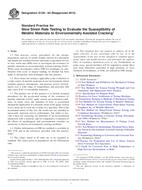
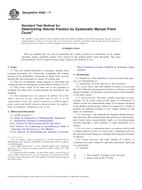 ASTM E562-11
ASTM E562-11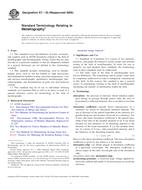 ASTM E7-03(2009)..
ASTM E7-03(2009).. ASTM E712-80(2009)..
ASTM E712-80(2009)..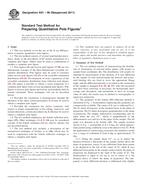 ASTM E81-96(2011)..
ASTM E81-96(2011)..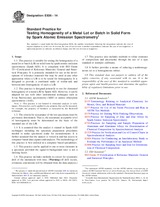 ASTM E826-14
ASTM E826-14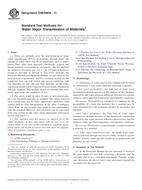 ASTM E96/E96M-13..
ASTM E96/E96M-13..
 Cookies
Cookies
